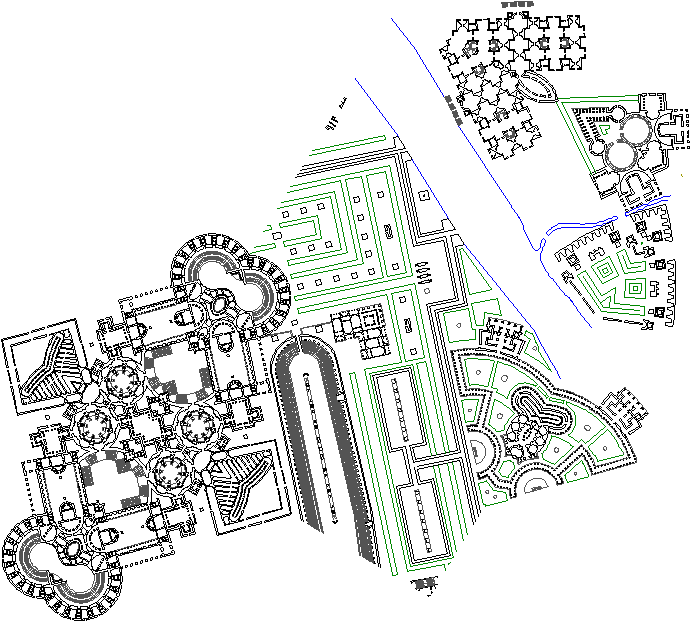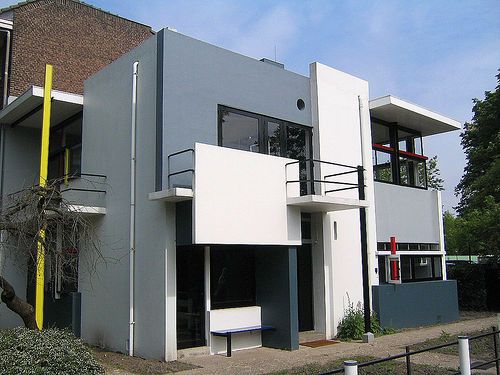2008.08.22 17:50
peter's canon
Popular interpretation views the heliocentric theory as a reality that ultimately downgrades humanity's stance within the larger scheme of things due to the Earth's disposition from the center of the universe. This negative view, however, is only superficially correct. In actuality, the heliocentric theory elevated humanity's consciousness, and it is this positive effect that relates directly to a transcendence from duality into singularity. Copernicus managed to shift humanity's perception of reality when he brought oneness to the age old religious and philosophical duality that fundamentally separated worldly appearance from actual reality. Myths and religious doctrines invariably render a separation between the realm of the divine and the realm of mortals, and, since Plato and Aristotle, philosophy has maintained that the physical characteristics of the world are only "shadows" or "imitations" of the 'true' reality that resides either in the realm of Ideas (Plato) or beyond the orbit of the moon in the realm of the fifth element (Aristotle). When Copernicus removed the Earth from the center of the universe and placed it between the orbits of Venus and Mars, and, along with these two planets, had the Earth orbiting around a central sun, the opposition denounced his theory as profane and heretical precisely because he positioned the Earth within the upper realm of God and pure reality. This assumption of a moving and non-central Earth, however, furnished a much simpler and aesthetically superior system for computing the future position of planets in the night sky. In the end, it was simple astronomical observation that resolutely confirmed the Earth's position within the realm of 'true' reality, and, henceforth, appearance and reality became one. The heliocentric theory, therefore, successfully resolved a duality deeply rooted in human thinking, and, thus, instituted a new consciousness for humanity.
Lauf
For the preeminent ancient theorists of the cosmos, Plato and Aristotle, physics was not fully mathematizable because only whatever was perfect (the Ideas or the fifth element) could be perfectly mathematical. The main rival doctrine to theirs in physics--atomism--seems not to have been conceived as mathematizable either, perhaps for the same reason--as a description of a universe of chance, it was obviously 'imperfect.' The mathematical functionalism that became the rule in Hellenistic astronomy took this dualism so seriously that it ceased to try to describe cosmic reality, as such, at all. It may be that this attitude even influenced Stoicism, if Blumenberg is right that Cleanthes, the leading Stoic, accused Aristarchus of impiety just because he presented his heliocentric model as more than a fiction, thus profaning the "mystery" of the cosmos. It appears, then, that a mathematical description of a homogeneous reality was not going to be possible until (again, through Nomilalism) the idea of an omnipotent God Who creates "from nothing," and thus has the same 'immediate' relation to everything, had destroyed the dualism of matter and form that runs through these older doctrines. In response to the question why such a dualism should have been the first form taken by self-conscious reason in our tradition, Blumenberg suggests that it represents a pattern of "relapses" into "the double-layered relationship that exists, in mythical thought, between what one sees and what really happens--between the flat appearances in the foreground and a 'story' in the background." For whatever reason, it does seem to be the case that the idea of a homogeneous and mathematizable reality is a unique characteristic of modern European thought; and it is certainly a necessary precondition of a theory like Copernicus's.
Wallace
excerpts from "(chronosomatically) Contemplating the Navel"
Both Einsenman's and Koolhaas's designs reflect the assimilating and metabolic imaginations. Yet Eisenman's designs remain mostly still-born, whereas Koolhaas's designs are reaching puberty.
2008.08.22 16:31
If it ain't Baroque, don't fix it.

Campus Theatrics Times Two, SagaCity
| |
2008.08.22 15:20
If it ain't Baroque, don't fix it.
Of course, the Baroque style continued beyond Bernini--I believe even the double porticos of St. Peter's Square were done after the above performance. All the same, Bernini's theatrical performance manifests the Baroque's consummate ending. Within his double theater Bernini capsulized the beginning of Western culture's new bifurcation of the real and the illusory, introduced mirroring as a henceforth dominant (post) Baroque (stylistic) theme, and, at base (or should I say at the ultimate end), inverted reality into a reenactment of its own illusory mirror (--is this perhaps also the genesis of historiography?).
Essentially, beyond the Baroque (and still often in our own modern times), architecture at its best is very sophisticated theater, keeping in mind that theater is one of the earliest forms of (man made) reenactment.
Lauf
2008.08.22 15:02
peter's canon
Language here is tricky, and the philosophical distinction between dualism, on the one hand, and duality and dual, on the other hand, needs noting with care. Dualism refers to the Cartesian view of the world as split irreconcilably between body and mind. Dualities and duals refer to pairs of interconnected and interactive concepts, which may or may not be opposites, such as figure and ground, or the positive and negative poles of a magnet, or the alternation of the truth values in the and/or conjunctions in truth-table logic.
Elliot Jaques
photon
1 : a quantum of radient energy (as light or X rays)
electron
: one of the constituent elementary particles of an atom being a charge of negative electricity equal to about 1.602x10 to the minus 19th coulomb having a mass when at rest of about 9.109x10 to the minus 28th gram or 1/1837 that of a proton, being the least massive known particle, and having a magnetic moment of about 1 Bohr magnaton associated with its one half quantum unit of spin.
And here I've been thinking that Bruce Goff and SOM were the most influencial American architects of the latter half of the 20th century.
Tschumi in the Show Me State, like Hannibal 100 miles morph of Santo Ludivico. Yes, rinse and repeat. Or just repeat and repeat.
Open auditions for CSI: Uranus.
2008.08.21 18:07
peter's canon
There are three other compositional factors within Masolino's painting that emphasize the column. First, the column stands just left of center and creates a slight imbalance. If the column were centered and the picture balanced, no further issue would be made. The off-centeredness of the column, however, catches the eye. Second, the column is the only major element of the painting that is shown complete, unobstructed, and uncropped. The column is in full view, whereas Gabriel's wings and Mary's cloak are not shown in their entirety. Third, as much as Gabriel's and Mary's gazes are aimed at each other, their gazes also appear to be aimed at the column. Furthermore, Gabriel and Mary look as if they are actually paying homage to the column.
As the above examples demonstrate, Masolino skillfully focuses the entire painting towards the column. Tradition alone is no longer a satisfactory explanation for the column's presence. Deeper questions arise. Why is a single column granted so much attention, and what meaning could it possibly represent, in a painting that portrays the Annunciation?
The story of the Annunciation, and hence the subject matter of Annunciation paintings, comes from the Gospel of St. Luke (1:26-38). The angel Gabriel comes to Mary as a representative of God. Gabriel tells Mary that she will conceive in her womb and bring forth a son. The son shall be great and of paramount lineage. Since Mary is a virgin, the words of the angel confuse her. The angel explains that her conception shall be a divine miracle, just as her relative Elizabeth's recent conception was also a divine miracle. Upon this explanation, Mary pronounces that she will serve and assist God, and accepts what the angel has told her. The angel then leaves.
The moment of Mary's compliance with Gabriel's message, when she proclaims herself as "handmaiden of the Lord," is exactly when the Incarnation takes place. It is at this point that "the Word was made flesh..." (John 1:14). The Annunciation and the Incarnation represent both sides of a turning point event. The Annunciation is the very last moment of the separation between God and humanity; a separation that began with the fall of Adam and Eve in the Garden of Eden. The Incarnation, on the other hand, is the very first moment of the reunion of God and humanity. Viewed in this light, Masolino's Annunciation, and all Annunciation paintings for that matter, depict the last moment of separation between God and humanity; the moment immediately before the human conception of Jesus Christ.
--Lauf, 1995
or

| |
2008.08.21 15:37
peter's canon
You know "immaculate conception of art" actually means art conceived free of original sin, which, in and of itself, is a hilarious idea.
2008.08.17 12:03
has the sun finally set on oma?
I just looked up trend spotting on google because that's what current architectural theory/history wants to be good at but isn't, and followed a link and then another link, and there it was, the conceptual model of my next building...

I too want to be a risky architect.
2008.08.17 11:41
Adam (sans Eve) in the Garden of Satire
Wednesday 8-17-77
Baroque churches of Rome
in transit to Venice
Churches were nice--first organized tour in a couple of days A lot of sketching and separateness.
Ate at a horrible place around Termini.
Train at night was a horrible mistake.
----------
exhausting, hot, ugly day
no more Villa Helena to go to
2008.08.16 13:46
Adam (sans Eve) in the Garden of Satire
Tuesday, 8-16-77
Vatican Museum was well worth it. Sistine Chapel is hard to relate about. For some reason I never get excited over what I see.
Went to the roof of St. Peter's--view was nice, sketching was horrible.
I was the last one to come home in our room.
|